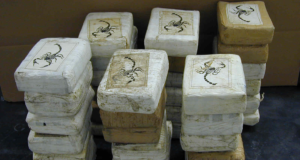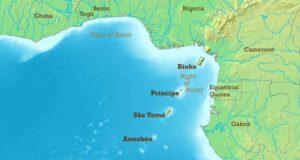By Michelle McKenna – Junior Fellow.
21st December 2013, Human Rights and Conflict Resolution, Issue 4, No. 6.
The Central African Republic has been plagued with conflict since it gained independence from France in 1960. The most recent conflict has arisen as a result of Séléka rebels ousting President Bozize from power in March 2013. Now it is concerned that the violence could escalate even further due to religious tensions between Christians and Muslims in the country. The situation has largely escaped attention from the Western media until the UN eventually decided to take action in December.
Since gaining independence from France over 50 years ago, the Central African Republic has been plagued with instability that has seen 8 presidential coups in its short history. The most recent conflict began when fighting broke out in the country in December 2012 when Séléka rebels launched an offensive against then President François Bozizé. The conflict escalated further when the rebels successfully ousted the president and took control of the capital Bangui on 24 March 2013.[1] The Séléka fighters placed their leader Michel Djotodia at the head of the new transitional government; however, Djotodia has since disbanded the Séléka and attempted to integrate them into the national army. An internal armed conflict has existed in the country since at least March and there have been reports of widespread breaches of international humanitarian law and human rights abuses.
The ongoing fighting has largely escaped attention from western media up until recently, but the scale of devastation is staggering and cannot continue to be ignored. A report from the UN Secretary General dated the 15th of November claimed that over 400,000 persons are internally displaced and a further 66,000 have officially registered as refugees in neighbouring countries in the past year. Since then, Amnesty report that there are now 614,000 people internally displaced – a further 200,000 persons in the space of a month. The Secretary General’s report also claims that over 1.1 million people are food insecure. There is a real fear that the CAR is facing a food crisis as its agriculture industry makes up 53% of its GDP and has been largely ruined by this conflict.
In addition to this, there are widespread reports of violence against civilians, including sexual violence against women and children, torture, illegal arrests and detentions and looting. Due to the ongoing fighting and instability there is a profound inability of the transitional authorities to do anything to stop these atrocities.[2] Fighting has been mostly concentrated in the capital of Bangui, but in recent months we have seen the conflict spreading to more rural areas as well. In the small population of 4.6 million, there are very few that have been unaffected by the conflict. Humanitarian aid is slow in coming, as even aid workers have been subject to attack.
The exact death toll or scale of injuries and violence is not known. Just two weeks ago, an altercation between Muslim ex-Séléka members and Christian anti-Balaka forces resulted in at least 450 people being killed and a further 160,000 people being driven from their homes. These are the official figures given by the UN, but Amnesty International claims that in fact over 1,000 people were killed in this attack. If you bear in mind that this figure is from one confrontation alone, it is not difficult to imagine the seriousness of the situation over the past 12 months. To make matters worse, following this incident, they are running out of places to bury the dead, with reports that bodies are piling up at the city’s morgues and mosques and being buried in back gardens.
The conflict in the CAR first began to attract international attention in October 2013 when the UN approved a peacekeeping mission to protect UN workers in the country. However, by this point, the conflict was already well advanced and there had been peacekeepers on the ground for many months. MICOPAX, run by the Economic Community of Central African States (ECCAS) has had 400 soldiers on the ground in the CAR to help consolidate peace in the country. In addition to this, France has had troops stationed at the airport in Bangui to protect its interests in its former colony. A few months ago the African Union announced plans to deploy a peacekeeping force of up to 3,600 soldiers in CAR under the name MISCA. This led to the UN Security Council issuing a resolution on 10th October 2013, in which, among other things, it asked the Secretary General to prepare a report looking at the possibility of international support for MISCA. The office of Ban Ki-moon published this report on 15th November expressing support for MISCA and indeed the possibility of establishing a UN-led peacekeeping force if the situation so requires.
On December 5th 2013, the UN Security Council authorised the AU peacekeeping mission MISCA under Chapter VII of the UN Charter. The force is authorised to use all necessary measures to protect its mandate, which includes protection of civilians and restoration of security in the country. The force is initially deployed for a period of 12 months from the 19th of December; when it is due to take over from MICOPAX. The AU has since agreed to boost the number of peacekeepers to 6,000 and France sent a further 1,600 troops following the clashes in Bangui at the start of December.
The major concern in the CAR is that the racial tensions could escalate and spread to neighbouring countries, or, indeed, result in genocide within the Republic. As deputy Secretary General Jan Eliasson recently said, “The CAR is becoming a breeding ground for extremists and armed groups in a region that is already suffering from conflict and instability… If this situation is left to fester, it may degenerate into a religious and ethnic conflict with longstanding consequences, a relentless civil war that could easily spill-over into neighbouring countries.” There is a concern that the peacekeepers have taken too long to come and will not be able to do enough to prevent it worsening, as it clearly has in the past few months. The Séléka rebels who seized power in March have consistently attacked Christian communities and churches, which has led to Christians forming self-defence militias known as the anti-Balaka forces to retaliate against them. In addition to this, there is evidence of Uganda’s Lord’s Resistance Army operating in the country. The fighting between these two factions is showing no sign of letting up and as Peter Bouckhaert from Human Rights Watch said this week, “the brutal killings in the Central African Republic are creating a cycle of murder and reprisal that threatens to spin out of control… the UN Security Council needs to act quickly to bring this evolving catastrophe to a halt.” On the 13th December Ban Ki-moon made a radio appeal to those involved in the bloodshed to end it and in particular singled out religious leaders as ‘messengers of peace’ to try and end the conflict between the two sides. A noble act on the part of Mr Ban to appeal directly to the perpetrators of the atrocities, but one that is unlikely to have any affect in reality.
The UN has to be prepared to launch its own robust peacekeeping mission or indeed military intervention if the situation does not improve rapidly. It is not enough to just put peacekeepers on the ground and watch as the situation unravels like it did in Rwanda. There is no rule of law in the country to hold the perpetrators of these war crimes and crimes against humanity to account and as long as the situation continues, the transitional government will not be able to move towards holding democratic elections in 2015 as planned. There is a real danger that the ethnic and religious tensions will escalate and as long as the two factions continue to fight, the humanitarian situation on the ground will continue to worsen. MISCA is undoubtedly a positive step forward in hopefully preventing the Central African Republic from becoming a failed state like Somalia, but the outlook still appears bleak. The people of the Central African Republic have desperately needed the help of the international community for months and it seems like only now has it remembered that they exist.
[1] http://www.amnesty.org/en/library/asset/AFR19/003/2013/en/7cb18014-e52a-4ab6-a879-4ac73d98c8af/afr190032013en.pdf
[2] Report of Amnesty International – ‘Central African Republic: Human Rights Crisis Spiralling out of Control’ (29th October 2013) http://www.amnesty.org/en/library/asset/AFR19/003/2013/en/b8c7e6b7-0671-486e-82fd-bde5359b01de/afr190032013en.html. A report from Human Rights Watch entitled ‘They Came to Kill: Escalating Atrocities in the Central African Republic’ (19th December 2013) further explores the scale of the atrocities in the country http://www.hrw.org/sites/default/files/reports/car1213_web.pdf
Michelle McKenna is contactable at:
Michelle.McKenna@hscentre.org
Please cite this article as:
McKenna, M. (2013) ‘The Forgotten Conflict in the Central African Republic’. Human Security Centre, Human Rights and Conflict Resolution, Issue 4, No. 6.
 Human Security Centre Human Rights and International Security Research
Human Security Centre Human Rights and International Security Research




